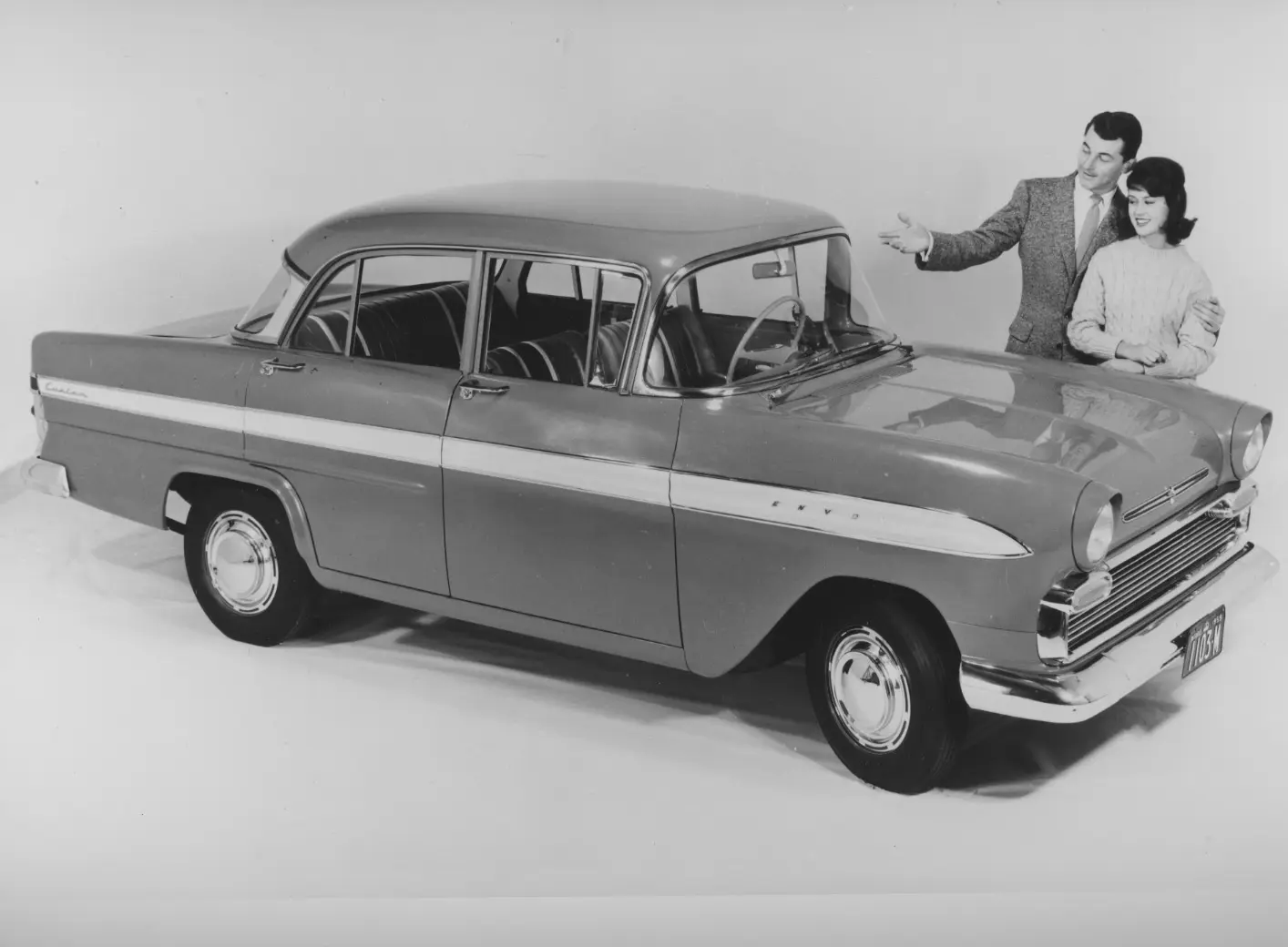ENVOY; A VAUXHALL FOR CANADA
10 November 2021
The overseas marketing of a British car under a different name is a widespread phenomenon. US motorists were offered the ‘Austin Marina’ and Triumph badged Standards while Chrysler promoted the Hillman Avenger as the ‘Plymouth Cricket’. Occasionally some manufacturers felt the need to create an entirely new marque name; ‘Sterling’ for American export Rover 800s while Vauxhall sold its products as ‘Envoys’ in Canada for more than a decade.
Our story commences in 1957, with the launch of the F Type Victor. A year later, Luton proudly announced that it was ‘Britain’s No. 1 Export car, first choice of 125,000 motorists at home and abroad’. One such overseas market was Canada, where the Victor was sold via Pontiac and Buick dealers. It proved so popular that the Chevrolet and Oldsmobile outlets demanded their own version.

Vauxhall reworked the F Type Series 2’s bodywork with a new grille, side and taillights and exterior trim. It bore the name ‘Envoy’ after Luton’s management rejected ‘Viscount’, and the new model did not feature any Griffin badges. “The British car designed and built especially for Canadians” debuted in January of 1960, with a choice of Standard, Special and Custom trim levels. As for the ‘Sherwood’ station wagon, it was sure to cause a sensation in the better suburbs of Vancouver.
Naturally, the brochures engaged in vast amounts of hyperbole, promising the buyer ‘style, color and prestige’, but the Envoy was an ideal ‘compact’. Furthermore, as it hailed from the UK, it did not attract import duties, giving it a price advantage over many European rivals. By late 1961 the original model was succeeded by the FB; this wonderful PR film makes the somewhat bold claim that it was a six-seater:
In 1964 the Viva HA became available via Pontiac and Buick dealerships, with Chevrolet and Oldsmobile outlets gaining the renamed ‘Envoy Epic’ in the following year. It became the country’s best selling British car and the second best selling import behind the VW Beetle, while Canada was Luton’s most important single export market.
However, by the late 1960s, the government imposed duties on products from other Commonwealth countries, severely impacting Vauxhall’s exports. The Envoy FD attempted to regain lost ground, with its four headlamp layout reflected Canadian safety regulations. The Epic HB similarly featured quad lights, which enhanced its already very attractive appearance.
1970 marked the swansong of Vauxhall’s presence in Canada, with the launch of the HC. All export models were sold under the ‘Firenza’ name; indeed, the coupe was devised with affluent young Canadian drivers in mind. But, alas, the “sporty-looking performer that is comfortable, economical and fun to drive, at a price that will surprise you” proved so unreliable that it failed to tempt motorists from Renault or Toyota.
And so, at the beginning of 1973, General Motors announced the end to Vauxhall sales in Canada. The effect back in Luton was disastrous, and by the end of the decade, the marque had lost its design autonomy. Yet, the venture started with great promise, for who could resist a Sherwood wagon finished in ‘Pixie Green’?
Why choose Lancaster Insurance?
Here at Lancaster, we love classic cars as much as you do and we understand what it takes to protect them for future generations.
We have links with some of the top classic car clubs around the country and some of our policies even offer discounts of up to 25% for club members.
Other benefits of classic car insurance through Lancaster can include:
- Historic rally cover
- Static show cover
- Limited mileage discounts
- Choice of repairer
- 24-hour claims helpline
Give your classic the protection it deserves and get a quote for your classic today.
